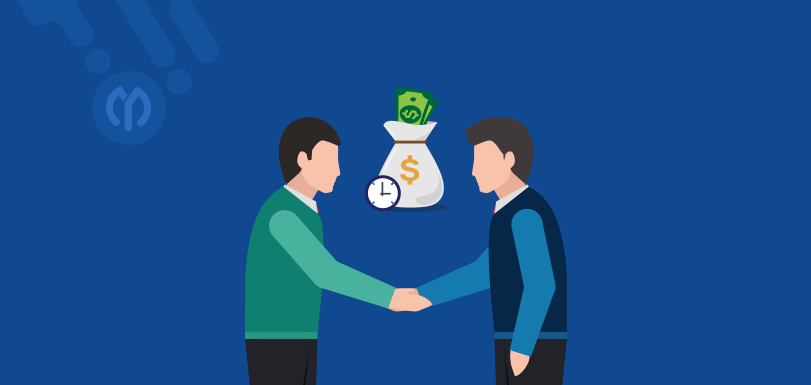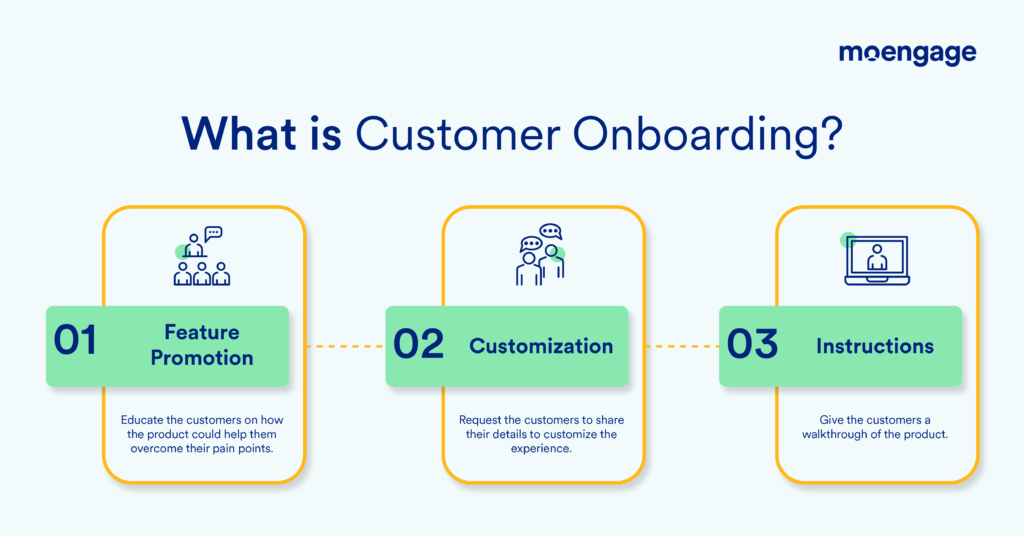Customer Success Strategies To Improve Lead Conversion And Customer Retention
In today’s highly competitive business landscape, customer success has become more than just a buzzword. It’s a strategic approach that focuses on helping customers achieve their desired outcomes while also driving growth for the business.
With the right customer success strategies in place, companies can not only improve lead conversion rates but also enhance customer retention, leading to sustainable business growth. This article showcases four effective strategies that can help businesses achieve these dual goals.
4 Ways You Can Use Customer Success Strategies To Improve Lead Conversion & Customer Retention
Prioritize Customer Success
"Companies that convert and retain customers easily do so because they prioritize customer success, and that starts with the company culture." - Philipp Wolf, CEO of Custify
Prioritizing customer success means having policies and practices in place that your staff follows to help your customers succeed. To gain deeper insights and practical experience, exploring opportunities in customer success manager jobs can be highly beneficial.
These practices include:
- Building a relationship with your customers from day 1. This can be achieved through welcome and onboarding emails, as well as assigning them a team member who can take care of their needs. The content of the emails differs depending on your business - for complex and hard-to-understand products, you can reach out with educational content or offer to schedule meetings to offer support with the setup and configurations. Of course, educational content and advice on how to use your product for best results is not something you should only offer in the beginning but rather throughout your relationship with your customer. For more straightforward products, simply letting your customers know you’re there for them can be enough. Either way, it’s the willingness to create a relationship beyond a simple transaction that counts.
- Proactivity. When you notice low engagement with your products and services, don’t wait until your customer reaches out to you first - by then, it will already be too late. Instead, be proactive and offer your assistance early on. This way, you’re not only helping the customer see the value of your product but also the value of a long-term relationship with you.
- Treating your customers as individuals. Every single one of your customers is different, so how you engage with them should also reflect their unique needs and challenges. This means segmenting your customer base and personalizing your interactions so, in the end, you can achieve the best outcomes for them.
This, however, is just the tip of the iceberg. Here, you can find more information on how to create a customer success strategy for your business.
Set Success Goals For Each Step In The Customer Journey
Mastering the intricacies of the customer success process can be challenging, so setting clear goals can help you determine whether you’re headed in the right direction. How you interact with customers will differ depending on which stage in the customer journey they’re in.
For most organizations, the customer journey looks something like this:
- Awareness
- Consideration
- Conversion
- Onboarding
- Adoption
- Value Realization
- Expansion
- Retention
- Advocacy
For each of these stages, here’s how customer success practices should be employed:
1. Awareness Stage
Goal - Educate potential customers about your offerings and their value through content. This can mean blog posts, videos, podcasts, webinars, meetups, guest speaking at industry events, etc.
2. Consideration Stage
Goal - Provide in-depth information to aid customers in evaluating your products/services against alternatives. This is where alternative-to type of content can help, as well as case studies, testimonials, and reviews, especially the ones that highlight how your products and services compare to those of your competitors.
3. Conversion Stage
Goal - Facilitate a smooth and confident purchasing decision by addressing any doubts or hesitations. This stage can be seen as an extension of the previous one because this is when you finally persuade a potential customer to make the purchase. You still need to showcase the advantages of your products or services, but now you can do so in a less promotional and salesy way.
4. Onboarding Stage
Goal - Ensure customers understand how to use your product/service effectively, minimizing any initial hurdles. This is the stage when you actually start implementing customer success practices - we’ve already mentioned a few in the previous section, but we go more in-depth on this topic in the next section. Nailing onboarding is crucial for lowering churn rates.
5. Adoption Stage
Goal - Encourage customers to fully embrace and integrate your solution into their routines. This is why proactivity is important - you need to ensure your customers use your product/service every day, that it becomes an irreplaceable part of their workflow.
6. Value Demonstration Stage
Goal - Showcase tangible benefits and results, reinforcing the value of your offering. This is when your customers fully realize how your product/service fits into their daily routine. Failing to see the value will quickly lead to churn.
7. Expansion Stage
Goal - Identify opportunities for upselling or cross-selling based on the evolving needs of the customer (for example, maybe they need more user accounts, more storage space, additional features, etc.). This is when segmentation and personalization come in handy, as different organizations will have different needs.
8. Retention Stage
Goal - Secure customer loyalty by consistently delivering value and addressing any concerns. This is why building relationships with customers and constantly asking for and acting on feedback is important. However, keep in mind that, for subscription-based products and services in particular, 20 to 40% of churn is actually involuntary, caused by expired or compromised cards. In these cases, using account updaters, dunning emails, and direct debit payments can help eliminate most of the involuntary churn.
9. Advocacy Stage
Goal - Transform satisfied customers into brand advocates who willingly refer others and share positive experiences. Create a process for identifying potential advocates and incentivize loyalty.
Optimize Customer Onboarding
Customer onboarding is probably the most important phase in the customer journey, as it sets the tone for a successful customer relationship. Keep in mind that onboarding is NOT implementation! The goal of onboarding is guiding customers through the initial stages of using your product or service, ensuring they have a seamless and valuable experience from the start.
To optimize customer onboarding, consider implementing the following strategies:
1. Personalized Welcome Experience - Tailor your welcome messages and communications to each customer. Address them by their name, acknowledge their specific needs, and highlight how your solution can solve their problems.
2. Clear and Concise Instructions - Provide step-by-step instructions on how to get started. Use visuals, onboarding videos, or interactive guides to make the onboarding process intuitive and easy to follow.
3. Segmented Onboarding Paths - Recognize that different customers may have varying requirements. Offer segmented onboarding paths based on their goals, previous interactions, or industry-specific needs.
4. Progress Tracking - Show customers their progress during onboarding. Highlight what they’ve completed and what remains. This helps them feel a sense of achievement and encourages them to complete the process.
5. Interactive Training - Offer interactive training sessions or webinars that allow customers to ask questions and engage in real time. This personal touch can clarify any uncertainties and enhance their understanding.
6. Hands-On Assistance - Provide direct assistance through live chat, email, or phone support. Be readily available to address any issues or queries customers might have during onboarding.
7. Resource Hub - Create a centralized hub with resources like FAQs, tutorials, and user guides. This empowers customers to find answers independently and at their own pace.
8. Continuous Communication - Stay engaged with customers beyond the initial onboarding phase. Send follow-up emails, check-ins, and relevant updates to demonstrate ongoing support.
9. Feedback Loop - Encourage customers to provide feedback on their onboarding experience. Use their insights to refine and improve the onboarding process.
10. Data-Driven Optimization - Analyze data and user behavior during onboarding. Identify bottlenecks, drop-off points, or areas of confusion and optimize accordingly.
11. Automated Touchpoints - Implement automated emails or notifications that guide customers through specific onboarding milestones. This keeps them informed and motivated to progress.
12. Gamification Elements - Incorporate gamification elements like rewards, badges, or progress bars to make the onboarding process engaging and enjoyable.
13. Regular Updates - Keep customers informed about updates, new features, and improvements. This reinforces their trust in your commitment to their success.
14. Collaborative Onboarding - Involve different teams, such as support, sales, and marketing, to ensure a cohesive onboarding experience. This collaborative approach can address a variety of customer needs.
Build Trust With Your Customers
Trust is another critical factor in successful customer acquisition and retention. But what does it take to build trust with customers?

- Transparent Communication - Transparent communication is the cornerstone of trust-building. Openly sharing information about your products, services, pricing, and policies creates an atmosphere of honesty that resonates positively with customers.
- Demonstrating Expertise - Establishing yourself as an authority in your industry is paramount. By showcasing your expertise through thought leadership content, webinars, and industry insights, you instill confidence in prospects about your capabilities.
- Providing Valuable Content - Sharing valuable content that addresses prospects’ pain points and challenges demonstrates your commitment to their success. This educational approach not only builds trust but also positions your business as a partner in their journey.
- Showcasing Customer Testimonials - Real-life success stories from satisfied customers serve as powerful testimonials to your business’s reliability. These anecdotes offer social proof, assuring prospects that your offerings can deliver the promised value.
- Delivering Consistent Experiences - Consistency across all touchpoints—from website navigation to customer support interactions—is key. A seamless and cohesive experience assures prospects that your business is dependable and reliable.
- Engaging in Two-Way Communication - Actively engaging in conversations with customers and attentively listening to their concerns fosters a sense of partnership. This two-way communication builds rapport and demonstrates your dedication to understanding their needs.
- Building Long-Term Relationships - Aim for long-term relationships rather than quick sales. Demonstrating your dedication to customer success and satisfaction contributes to trust over the long haul.
Summing Up
Implementing effective customer success strategies is a game-changer for lead conversion and customer retention. By understanding your customers, providing proactive support, and fostering personalized relationships, you can create a loyal customer base that not only sticks around but also becomes your brand’s advocate.









